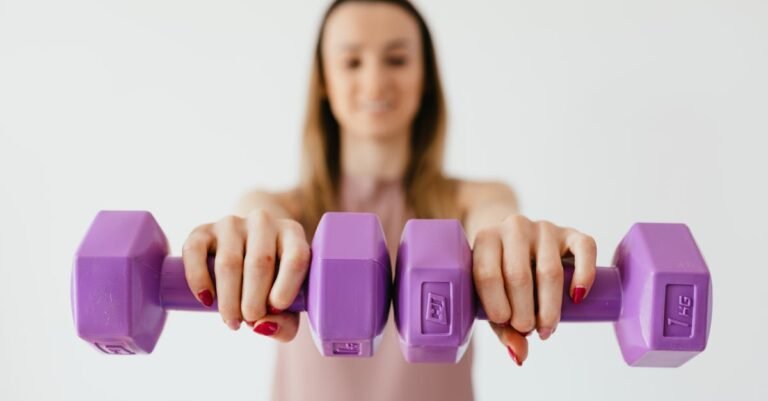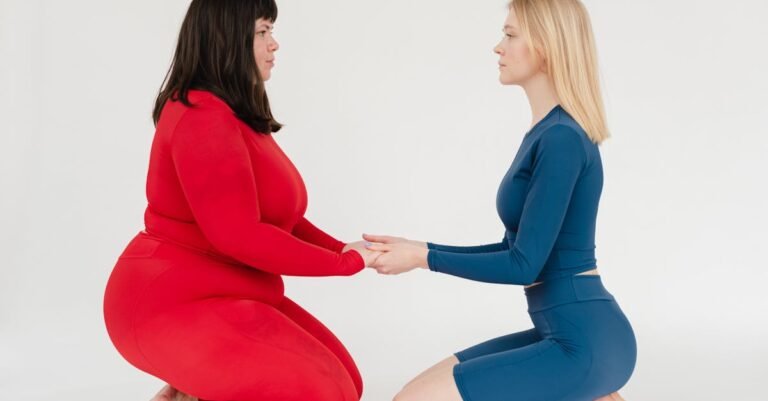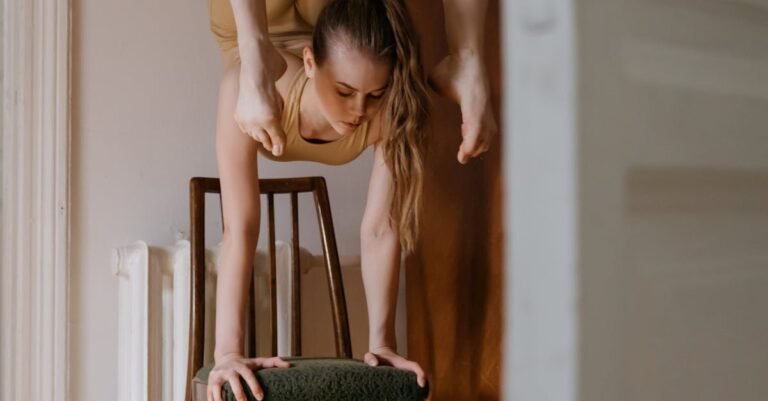Build Core Strength With Basic Plank Moves
Let’s talk core strength. You hear about it everywhere, right? Trainers preach it, fitness magazines splash it across covers, and maybe your doctor even mentioned it. But what does it really mean to have a strong core, and how can something as simple as a plank possibly be the key? Well, get ready, because we’re diving deep into the world of core stability, and spoiler alert: the humble plank is a powerhouse move you absolutely need in your arsenal. Forget endless crunches; we’re talking about building functional, deep strength that supports your entire body, and it starts with mastering the basics.
Why is Core Strength So Darn Important Anyway?
Okay, real talk. Why should you care about your core beyond wanting those elusive abs? Is it just vanity, or is there something more profound going on beneath the surface? Trust me, it’s way more than just aesthetics. Think of your core as the central command center, the sturdy trunk of your body’s tree, from which all movement originates or flows through.
Beyond the Six-Pack: What ‘Core’ Really Means
First things first, let’s bust a myth. Your core isn’t just the rectus abdominis – the muscle group often called the “six-pack.” That’s just the flashy exterior! Your true core is a complex network of muscles wrapping around your midsection like a natural corset. It includes:
- Transverse Abdominis: The deepest layer, acting like a built-in weightlifting belt, stabilizing your spine.
- Internal and External Obliques: Located on your sides, responsible for twisting and side-bending movements.
- Rectus Abdominis: The top layer, involved in flexing your spine (like in a crunch).
- Erector Spinae: Muscles running along your spine, crucial for back extension and posture.
- Multifidus: Small but mighty muscles deep in the back that stabilize spinal segments.
- Pelvic Floor Muscles: Supporting your organs from below.
- Diaphragm: Your primary breathing muscle, forming the roof of the core.
- Glutes (Butt Muscles): Yes, they play a huge role in pelvic stability and power generation!
- Hip Flexors: Connecting your legs to your torso.
See? It’s a whole symphony of muscles working together. A strong core means all these muscles are coordinated, stable, and capable of supporting your spine and pelvis through any movement.
The Everyday Benefits You Didn’t Know You Needed
So, what does this strong, coordinated core actually do for you in real life? You might be surprised.
Better Posture & Less Back Pain
Think about how much time we spend sitting – at desks, in cars, on the couch. This often leads to slouching, which puts immense strain on the lower back. A strong core, particularly the deep stabilizing muscles like the transverse abdominis and multifidus, acts like internal scaffolding. It helps hold your spine in a neutral, supported position, reducing that slouch and alleviating, or even preventing, nagging lower back pain. It’s like having your own personal posture police, constantly reminding your body to stand (or sit) tall.
Improved Balance & Stability
Ever stumble unexpectedly or feel wobbly on uneven ground? A weak core is often the culprit. Your core muscles are essential for maintaining balance, whether you’re standing on one leg, walking on slippery surfaces, or simply reaching for something on a high shelf. A stable core provides a solid base, making you less prone to falls and generally more coordinated in your movements. It’s the anchor that keeps your ship steady, even in choppy waters.
Enhanced Athletic Performance
Whether you’re a weekend warrior, a dedicated athlete, or just enjoy playing catch with your kids, a strong core is your secret weapon. Power for running, jumping, throwing, swinging a bat or golf club – it all originates from or transfers through your core. A stable midsection allows for more efficient force transfer from your lower body to your upper body (and vice versa), leading to more powerful movements, better endurance, and a reduced risk of injury. It’s the crucial link in the kinetic chain.
Introducing the Plank: Simplicity Meets Power
Now that we appreciate the sheer awesomeness of a strong core, let’s talk about one of the most effective, accessible, and fundamental exercises to build it: the plank. It looks simple, maybe even deceptively so. Just holding a static position? How hard can that be? Oh, you’d be surprised!
What is a Plank, Really? (Hint: It’s More Than Holding Still)
A plank isn’t about passively holding yourself up. It’s an active isometric contraction. Isometric means the muscle length doesn’t change significantly, but the muscles are working intensely to resist forces – in this case, gravity. When you plank correctly, you’re actively bracing your entire core musculature, from your shoulders down to your glutes and even your legs. You’re engaging the deep stabilizers, the obliques, the rectus abdominis, the back extensors – pretty much everything we talked about earlier. It’s a full-body tension exercise disguised as simply holding still.
Why Planks Rule for Core Building
Compared to dynamic exercises like crunches, which primarily target the rectus abdominis and involve spinal flexion (bending), planks offer several advantages:
- Spine Neutrality: Planks train the core to resist movement and stabilize the spine in a neutral position, which is arguably more functional for everyday life and injury prevention than repeatedly flexing the spine.
- Full Core Engagement: They work the entire corset of core muscles simultaneously, including those deep stabilizers often missed by crunches.
- Shoulder and Glute Activation: Planks also engage the muscles around your shoulder blades and your glutes, making them a more holistic exercise.
- Low Impact: They don’t put repetitive stress on the spine like some other core exercises can.
- Accessibility: You need no equipment, just a little floor space!
Basically, planks teach your core its primary job: to stabilize your trunk. It’s foundational strength training at its finest.
Mastering the Foundational Plank: The Standard Forearm Plank
Ready to get down to business? Let’s break down the classic forearm plank. Getting the form right is crucial for effectiveness and safety. Remember, quality trumps quantity every single time.
Getting Started: Step-by-Step Guide
- Starting Position: Begin by lying face down on the floor or an exercise mat.
- Forearm Placement: Place your forearms on the floor with your elbows directly underneath your shoulders. Your arms should form a 90-degree angle. Clasp your hands together or keep your palms flat on the floor – whichever feels more comfortable and stable.
- Lift Off: Tuck your toes under and lift your hips off the floor, engaging your core muscles. Your body should form a straight line from your head to your heels. Imagine a broomstick resting along your back – it should touch your head, upper back, and tailbone.
- Engage Everything: This is the key! Actively squeeze your glutes (butt muscles). Brace your abdominal muscles as if you’re about to take a punch to the gut. Keep your thighs engaged. Push your forearms actively into the floor.
- Head and Neck: Keep your head in a neutral position, looking down at the floor or slightly ahead. Avoid letting your head droop or cranking it up. Your neck should be a natural extension of your spine.
- Breathe: Don’t hold your breath! Breathe steadily and deeply throughout the hold.
- Hold: Maintain this position for your desired time, focusing intently on maintaining that straight line and full-body tension.
Common Mistakes to Avoid (And How to Fix Them)
Even seemingly simple exercises have common pitfalls. Watch out for these planking faux pas:
Sagging Hips or Piking Up?
This is the most frequent error. Letting your hips sag towards the floor means your core isn’t engaged enough, and you’re putting stress on your lower back. Conversely, pushing your hips too high up towards the ceiling (piking) takes the load off your abs.
The Fix: Consciously engage your glutes and abs. Think about tucking your tailbone slightly. If you feel your hips dropping, squeeze harder or end the set and rest. If you’re piking, lower your hips until you feel that straight line again. Having someone watch you or planking near a mirror can help initially.
Head and Neck Alignment
Looking up or letting your head hang heavy can strain your neck.
The Fix: Keep your gaze down or slightly forward. Imagine holding a small orange under your chin. Your neck should feel long and aligned with the rest of your spine.
Other things to watch for include letting your shoulders creep up towards your ears (push the floor away and draw shoulder blades down) or holding your breath (breathe!).
Exploring Basic Plank Variations for Total Core Engagement
Once you’ve got the hang of the standard forearm plank, you can introduce variations to challenge your muscles in different ways and keep things interesting. Here are a few fundamental options:
The High Plank (Straight-Arm Plank)
This is very similar to the top position of a push-up. Instead of resting on your forearms, you support yourself on your hands, placed directly under your shoulders, with arms straight (but elbows not locked).
Why do it? The high plank places a bit more emphasis on the shoulders and chest while still providing an excellent core challenge. It’s also the starting point for many other exercises like push-ups and mountain climbers. The same form cues apply: straight line from head to heels, core braced, glutes squeezed, neutral head position.
The Side Plank: Hitting the Obliques
Your obliques, those muscles along the sides of your waist, need love too! The side plank is fantastic for targeting them, improving lateral stability.
Side Plank Step-by-Step
- Starting Position: Lie on your side with your legs straight, stacked one on top of the other. Place your bottom forearm on the floor, ensuring your elbow is directly beneath your shoulder.
- Lift Off: Engage your core, especially the side closest to the floor (your obliques), and lift your hips off the ground. Your body should form a straight diagonal line from your head to your feet.
- Stabilize: Keep your hips square (don’t let them rotate forward or backward) and avoid letting them sag. You can place your top hand on your hip or extend it towards the ceiling for an extra balance challenge.
- Hold and Repeat: Hold for your desired time, maintaining good form, then carefully lower and repeat on the other side.
Side Plank Modifications (Easier & Harder)
Easier: If a full side plank is too challenging initially, bend your bottom knee and place it on the floor for extra support. You can also stagger your feet instead of stacking them.
Harder: Lift your top leg straight up towards the ceiling. You can also add dips by lowering your hips slightly towards the floor and lifting them back up (hip dips).
Reverse Plank: Don’t Forget the Posterior Chain!
While standard planks heavily engage the front of your core, the reverse plank focuses on the posterior chain – your glutes, hamstrings, and lower back extensors, which are also crucial parts of your core!
- Starting Position: Sit on the floor with your legs extended straight out in front of you. Place your hands on the floor slightly behind and outside your hips, fingers pointing towards your feet (or slightly out if that’s more comfortable for your wrists).
- Lift Off: Press into your hands and heels, engage your glutes and hamstrings, and lift your hips off the floor until your body forms a straight line from your shoulders to your heels.
- Engage: Keep your core tight and actively squeeze your glutes. Try to keep your head in line with your spine – you can look straight up or slightly forward.
- Hold: Maintain the position, focusing on keeping those hips lifted high.
This one can feel quite different, really firing up the back of your body!
How Long Should You Hold a Plank? Quality Over Quantity
This is a super common question. You see people online holding planks for minutes on end, but is that necessary or even beneficial? Honestly, probably not for most people. Holding a plank with perfect form for 30 seconds is far more effective than holding a sloppy plank with sagging hips for 2 minutes.
Focus on maintaining that full-body tension and straight line. When your form starts to break down – hips sag, back arches, shoulders fatigue – it’s time to stop, rest, and go again if desired. Aim for shorter, high-quality holds rather than marathon sessions with poor form.
For beginners, start with holds of 15-30 seconds. As you get stronger, you can gradually increase the duration, perhaps aiming for 45-60 seconds per set. You can also increase the challenge by adding variations rather than just holding the basic plank for longer and longer.
Integrating Planks Into Your Routine
Okay, you’re sold on planks. How do you actually fit them into your life?
Frequency: How Often Should You Plank?
Because planks primarily work on muscular endurance and stability, you can generally do them more frequently than heavy strength training. Doing planks 3-5 times per week is a great goal for most people. You can incorporate them into your existing workout routine (either as part of a warm-up, a cool-down, or within the main workout) or do them as a standalone mini-session on off days.
Listen to your body, though. If you feel excessive soreness or fatigue, take a rest day. Recovery is just as important as the exercise itself.
Sample Beginner Plank Workout
Here’s a simple routine you can try a few times a week:
- Forearm Plank: 3 sets of 20-30 second holds (focus on perfect form!) Rest 30-60 seconds between sets.
- Side Plank (Right): 2 sets of 15-20 second holds. Rest 30 seconds.
- Side Plank (Left): 2 sets of 15-20 second holds. Rest 30 seconds.
- Optional: High Plank: 2 sets of 15-20 second holds. Rest 30-60 seconds.
As this gets easier, gradually increase the hold times or the number of sets, or start exploring slightly harder variations.
Listening to Your Body: Modifications and Safety
This is paramount. Exercise should build you up, not break you down. While planks are generally safe, pay attention to any pain signals.
If you have shoulder issues, the forearm plank might feel better than the high plank. If you have wrist pain, stick to forearm planks. If you experience lower back pain during a plank, stop immediately. It likely means your form is off (probably sagging hips) or your core isn’t strong enough yet for that duration. Try dropping to your knees (modified plank) or reducing the hold time significantly. Build up slowly.
A modified plank, performed on your knees instead of your toes, is an excellent starting point if the full version is too challenging. Maintain the straight line from your head to your knees and keep the core and glutes engaged. It’s always better to do a modified version correctly than a full version poorly.
If you have pre-existing medical conditions, especially spinal issues, it’s always wise to consult with a doctor or physical therapist before starting any new exercise program, including planks.
Beyond the Basics: What’s Next After Mastering Planks?
So, you’ve mastered the basic planks and their variations. You can hold them with stellar form, and you’re feeling stronger. What now? The world of core training is vast!
You can progress by:
- Increasing Duration/Sets: Gradually hold planks for longer or do more sets.
- Adding Instability: Try planks on an unstable surface like a BOSU ball or stability ball.
- Adding Movement: Incorporate movements like plank jacks (jumping feet out and in), plank reaches (reaching one arm forward), or plank rows (lifting a dumbbell while holding a plank).
- Exploring More Advanced Variations: Look into exercises like walking planks (moving from forearm to high plank and back), plank rotations, or single-leg planks.
- Combining with Other Core Exercises: Planks are fantastic, but a well-rounded core routine includes exercises that challenge stability, anti-rotation, flexion, and extension in various planes of motion (think bird-dogs, dead bugs, Pallof presses, farmer’s walks, etc.).
The plank is your foundation, the solid ground upon which you can build a truly robust and functional core.
Conclusion: Your Stronger Core Starts Now
Building core strength doesn’t require fancy equipment or complicated routines. The humble plank, in its various forms, offers an incredibly effective way to engage and strengthen that vital network of muscles supporting your spine and powering your movements. By focusing on proper form, listening to your body, and gradually progressing, you can unlock the myriad benefits of a strong core – from better posture and reduced back pain to enhanced stability and athletic prowess. It’s simple, accessible, and profoundly impactful. So, find some floor space, brace yourself, and start building that stronger, more resilient core today. Your body will thank you for it!
Frequently Asked Questions (FAQs)
Q1: Can I do planks every day?
A: Generally, yes, you can do basic planks quite frequently, even daily for short durations, as they focus on endurance and stability. However, it’s crucial to listen to your body. If you feel pain or excessive fatigue, take rest days. Also, ensure your form remains perfect; daily practice with poor form isn’t beneficial. Varying the types of planks can also be helpful.
Q2: Will planks give me a six-pack?
A: Planks definitely strengthen the abdominal muscles, including the rectus abdominis (the “six-pack” muscle). However, visible abs depend largely on having a low body fat percentage, which is primarily achieved through diet and overall calorie expenditure. Planks build the muscle underneath, but you need to reduce fat covering them to see them. So, planks are part of the equation, but not the whole picture.
Q3: What if I can only hold a plank for 10 seconds?
A: That’s perfectly okay! Everyone starts somewhere. Focus on holding those 10 seconds with the absolute best form possible – core tight, glutes squeezed, straight line. Do multiple sets of these short, high-quality holds with rest in between. Consistency is key. Gradually, aim for 12 seconds, then 15, and so on. Progress will come faster than you think if you stick with it and prioritize form over duration.
Q4: Are planks safe if I have back pain?
A: It depends on the cause and severity of your back pain. For some types of back pain, strengthening the core with planks (especially with perfect form or modifications like knee planks) can be very beneficial. However, if done incorrectly (e.g., with sagging hips), planks can aggravate back pain. It’s highly recommended to consult your doctor or a physical therapist first. They can assess your situation and advise if planks are appropriate and teach you the correct form or modifications.
Q5: Do I need any equipment for planks?
A: Absolutely not! That’s one of the best things about basic planks (forearm, high, side). All you need is your own bodyweight and a small patch of floor. An exercise mat can make it more comfortable on your elbows or hands, but it’s not essential. Planks are one of the most accessible exercises you can do anywhere, anytime.










